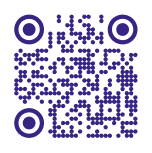
Introduction
Zakat is one of the Five Pillars of Islam and serves as a fundamental practice that encourages generosity, social justice, and the redistribution of wealth within a community. It holds profound significance for Muslims, both spiritually and socially, promoting a sense of responsibility toward those in need. This guide will explore what zakat is, its importance, categories, payment methods (with a focus on Malaysia), and how it applies to modern financial systems like cryptocurrencies.
Chapter 1: Understanding Zakat – The Pillar of Charity in Islam
What is Zakat?
The term “zakat” originates from the Arabic word meaning “to purify” or “to grow.” It is a mandatory act of charity that Muslims must give annually, typically calculated as 2.5% of their savings or wealth. The amount of zakat is determined based on the individual’s wealth and assets that have been in their possession for at least one full lunar year.
The Importance of Zakat in Islam
- Spiritual Benefits – Zakat purifies wealth and encourages detachment from material possessions, fostering humility, gratitude, and empathy.
- Social Welfare – It bridges the gap between the rich and the poor, preventing wealth concentration and promoting economic justice.
- Strengthening the Community – Giving zakat fosters unity and brotherhood within the Muslim community, ensuring that no one is left behind.
Who Receives Zakat?
- The Poor and Needy (Al-Fuqara & Al-Masakin) – Those who lack the means to support themselves.
- The Indebted (Al-Gharimin) – Those burdened by debt and unable to repay.
- For the Cause of God (Fi Sabilillah) – Religious and community welfare causes.
- Travelers (Ibn As-Sabil) – Stranded individuals in need of assistance.
- Zakat Collectors (Amil Zakat) – Those assigned to collect and distribute zakat.
Chapter 2: Categories of Zakat
Zakat is categorized into two main types based on recipients and applicable wealth. These categories ensure effective distribution.
1. Zakat al-Mal (Wealth Zakat)
- Rate: 2.5% of total wealth held for one lunar year.
- Eligibility: Wealth must exceed the nisab threshold (85 grams of gold or 595 grams of silver).
- Assets Covered: Savings, investments, rental income, business inventory, agricultural produce, and livestock.
2. Zakat al-Fitr (Fitrana – Charity at the End of Ramadan)
- Amount: A fixed sum based on staple food prices (e.g., dates, wheat, or rice).
- Purpose: Purifies fasting and ensures the poor can celebrate Eid.
- Payment Time: Before the Eid al-Fitr prayer.
3. Zakat on Agriculture (Crops & Produce)
- Rate:
o 10% for naturally irrigated land.
o 5% for artificially irrigated land.
4. Zakat on Business (Trade and Commerce)
- Rate: 2.5% on total business assets and profits.
- Includes: Inventory, goods for sale, and business earnings.
5. Zakat on Livestock
- Applicable to: Camels, cows, sheep, and goats.
- Rate: Depends on the number of animals owned.
Chapter 3: How to Pay Zakat in Malaysia – A Step-by-Step Guide
1. Determine Your Zakat Obligation
- Nisab Threshold: If wealth exceeds 85g of gold or 595g of silver, zakat is required.
- Hawl (Time Condition): Wealth must be held for one full Islamic (lunar) year.
2. Understand the Zakat Types in Malaysia
- Zakat al-Mal: Savings, investments, and business profits.
- Zakat al-Fitr: End-of-Ramadan obligatory charity.
- Zakat on Income: Salary-based zakat, calculated after essential expenses.
3. Calculate Your Zakat
- Wealth Zakat: 2.5% of total savings/investments.
- Income Zakat: 2.5% of yearly savings after basic needs.
- Zakat al-Fitr: Usually RM7 to RM10 per person.
- Use official zakat calculation tools from state religious councils.
4. Choose Your Zakat Payment Method
- Online Payment:
oZakat Selangor (MAIS) – Online portals & banking options.
oZakat Kuala Lumpur (JAWI) – Digital payments available.
oZakat Negeri Sembilan & other states – Online zakat systems. - Bank Transfer: Direct payments to zakat accounts via partnered banks.
- In-Person: Payment at zakat offices or mosques.
5. Obtain a Receipt & Track Distribution
- Always keep a receipt for record-keeping and tax purposes.
- Zakat funds are distributed for welfare programs, humanitarian aid, and community development.
Chapter 4: Zakat in the Era of Cryptocurrencies
Can Zakat be Paid in Cryptocurrency?
As digital currencies like Bitcoin and Ethereum grow in popularity, Muslims question whether they qualify for zakat. Recent studies suggest that if crypto assets meet nisab and hawl conditions, zakat is due.
Challenges of Crypto Zakat
- Volatility: Price fluctuations make calculation difficult.
- Lack of Standardization: No universal method for crypto zakat assessment.
- Low Awareness: Many crypto holders are unaware of their zakat obligations.
Practical Solutions
- Crypto-to-Fiat Conversion: Some platforms convert crypto donations into fiat currency before distribution.
- Direct Crypto Zakat: Organizations like Blossom Finance and GlobalSadaqah accept zakat in crypto.
- Shariah Compliance Efforts: Ongoing research and fatwas are shaping guidelines for crypto zakat.
Policy Recommendations
- Standardized calculation methods for crypto zakat.
- Awareness campaigns for tech-savvy Muslim investors.
- Shariah advisory boards to regulate crypto zakat policies.
Conclusion
Zakat remains a powerful tool for economic justice and social welfare in the modern world. Whether paid in cash, goods, or even cryptocurrency, it helps build a just society where the basic needs of all are met. With emerging technologies and new financial landscapes, zakat continues to evolve, offering innovative ways to support those in need while upholding Islamic principles.
By understanding how zakat works, its categories, and modern applications, Muslims can fulfill their obligations efficiently and effectively, ensuring maximum impact on individuals and communities worldwide.
